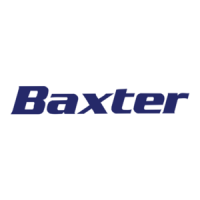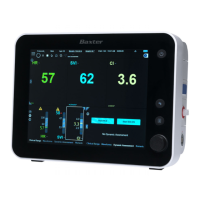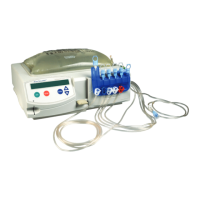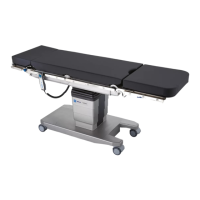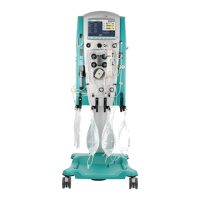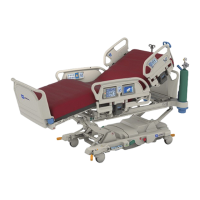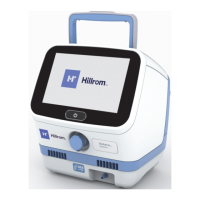1. Introduction
will increase as well. In these cases, acid rinses or heat clean
cycles will not entirely remove the precipitates in the filters.
The filters must be replaced.
1.4.3.3 Procedural
To prevent possible Instrument damage while unpacking, cut
the box only along the line marked CUT ALONG LINE TO
OPEN.
Storage at 0°C or less is possible only if the hydraulic circuit is
completely drained. (See Section 27, Specifications.) If water
remains in the Instrument and it freezes, the hydraulic system
may be severely damaged.
1.4.3.4 Cleaning and Disinfection
Do not allow sodium hypochlorite to remain in the fluid path
longer than the recommended time or damage may result.
Do not use other disinfecting agents or allow diluted sodium
hypochlorite to dry on the external surfaces or damage may
result.
Proper incoming water line disinfection must be followed in
order to prevent heater damage.
1.4.4 Indications
The Instrument is indicated for use when a hollow fiber or parallel
plate dialyzer is chosen for use in chronic or acute hemodialysis
treatments including high-flux hemodialysis and on-line
hemodiafiltration.
1.4.5 Contraindications
The Instrument is not intended to be a substitute for monitoring the
patient's condition or extracorporeal circuit by trained and
qualified personnel.
The Instrument is recommended for use only on patients whose
prescriptions are within the minimum and maximum ranges of the
Instrument, especially for values of minimum UF rate, UF rate
error, dialysate flow range, minimum blood pump speed, air
detector sensitivity, and extracorporeal volume (as defined in
blood set labeling). It is not intended to be used outside of the
device specifications or limitations.
The Instrument is not to be used with neonates.
157-1278-896, Rev A 1-13
March 2004
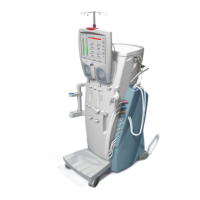
